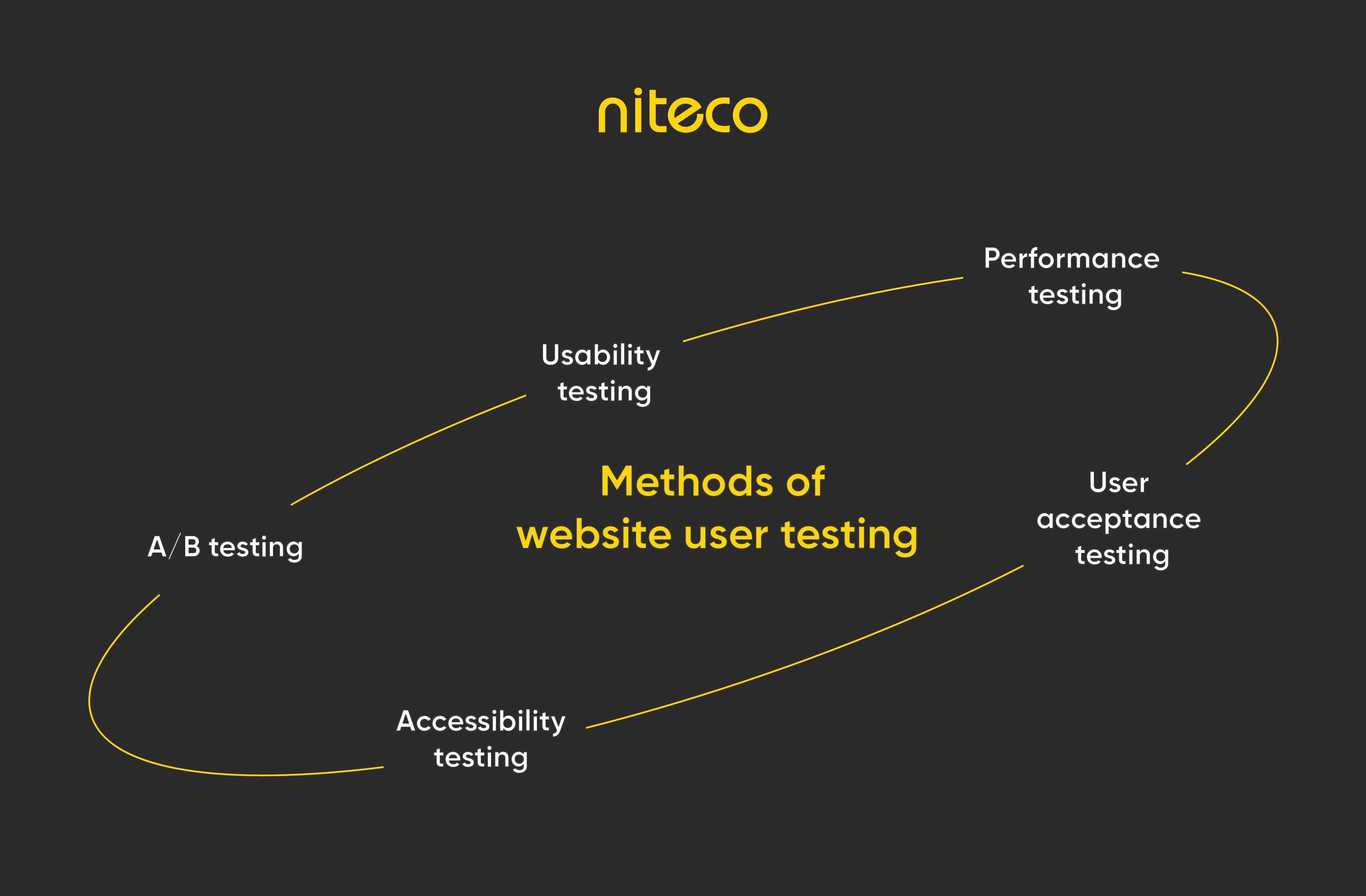A website that is user-friendly, accessible, and meets the demands of your target audience is critical for the success of any business or organization in today's digital era. However, creating a website that satisfies all those demands without any errors can be a challenging task. That's where website user testing comes in.
Website user testing is a process in which a group of customers, typically representing the target audience of your website, are invited to interact with your website in their own preferred way and provide feedback.
The main purpose of user testing is to detect any usability issues and design flaws that may damage your website's user experience. By conducting website user testing, we can ensure that the user experience is as good as it can be, allowing for increased traffic, higher conversion rates, and increased customer loyalty.
In this article, we will explore the basics of website user testing, including the benefits of user testing, different types of user testing, and how to conduct user testing.
Table of contents:
- What is website user testing and why is it important?
- How to conduct user testing
- Best practices for user testing
- In conclusion
Website user testing is a key step in finalizing and launching a website. Its purpose is to evaluate a website’s usability by observing and receiving feedback from users when they interact with the website in a realistic setting. The data recorded and collected during user testing is then analyzed to identify usability issues and improve the overall user experience of the website.
User testing is implemented to not only test the appeal of the site’s visuals, but also detect and solve any issues which can only be identified by repeated testing. This allows you to see exactly what works and, more crucially, what does not.
Usability testing
Usability testing typically involves inviting a group of participants who represent the website’s target audience. They are asked to interact with the website while being observed, with testers taking notes on their behavior and feedback. The tasks are designed to simulate real scenarios that users may encounter when using the product.
Usability testing can be conducted in several ways, including in-person interviews, remote interviews, and online surveys. Each method has its advantages and disadvantages. For example, in-person interviews can be useful for discovering usability issues and getting thorough feedback, but it is more time-consuming and costlier than other methods. On the other hand, remote testing may not provide as much detailed feedback as in-person testing, but it is cheaper. Therefore, the best method for your purposes depends on your goals and demands, as well as the website’s target audience.
Usability testing also includes mobile-friendly testing, which is only gaining in importance thanks to the ongoing proliferation of mobile devices. One popular tool for mobile-friendly testing is Google Search Console’s Mobile-Friendly Test. It evaluates and provides a report on a website’s mobile friendliness based on criteria such as responsive design, touchscreen readiness, font size, content spacing, or loading speed. Mobile-friendly testing can be complicated and time-consuming, but it is essential to ensure a positive user experience across different devices.
One of the effective methods for successful usability testing involves heatmaps, which can represent how users interact with your website. They can help identify the causes of user frustration, especially in rage click maps.
A/B testing
A/B testing requires you to create two different versions of a piece of the website and show each version to a different group of participants. These participants’ behavior will determine which version is better. This method can also be used for continuous optimization of the website after go-live.
This method can be useful if you want to test small changes to your website and measure how they impact the users’ behavior. You can also analyze data from A/B testing to achieve a specific desired outcome for your website such as higher traffic, conversions, or engagement. Remember that this method needs more participants than others for valid results.
Accessibility testing
Accessibility testing is a user testing method that ensures all people can use your website, even those with physical disabilities. To conduct such tests, you need to recruit a group of participants with disabilities and take note of their interactions and feedback when using your website. This method is essential because it ensures your website is accessible and usable for all users.
In terms of accessibility testing, the most important hurdle for your site to take is fulfilling the WCAG (Web Content Accessibility Guidelines) 2.1 standards. These standards lay out minimum requirements for websites to fulfil in order to allow access by people with a wide range of disabilities. While WCAG 2.2 and even 3.0 are being worked on, they have not been officially published yet.
User acceptance testing
User acceptance testing (UAT, also known as end-user testing), is letting end-users test the website to confirm whether it meets their requirements. This method ensures that the website is ready for release.
Website UAT is often conducted after the development team has completed numerous rounds of testing on the website. By involving end-users in the testing process, you can gain valuable insights into how the website will be used in real life and make improvements that can enhance its usability and effectiveness. For Niteco’s development teams, UAT is a crucial part of the development process.
Performance testing
Performance testing is a method of testing a website's performance under different load conditions, to ensure that it can handle the given traffic and usage. This type of testing is important as it helps you find out if your website performs well and can handle high traffic without crashing or slowing down. During performance testing, the website is subjected to various types of load, such as high traffic, user requests, or data volumes.
Save time and money
By recognizing usability and technical issues early on, you can make the necessary changes before the website goes live, thereby avoiding costly redesigns in the process. Besides, fixing problems before they become more complex allows you to decrease the time necessary for development. In short, conducting user testing may save time and money while also ensuring that the website launches on schedule and within budget.
Meet user expectations
User testing is a good way to listen to your customers. This is because your target audience also joins the website development process when you conduct user testing. By understanding how users interact with the website, you can create a website that is tailored to users' needs and preferences.
In addition to this, user testing is also a valuable opportunity to uncover customer frustrations such as complex navigation, broken buttons, or difficulties in using the dashboards. Those priceless insights encourage you to improve your website and leave your competitors in the dust.
Increase conversion rate and revenue
User testing can help to detect which areas of the website are not performing well, such as low-quality images, or weak calls-to-action. By making improvements based on customer feedback, you can increase conversions and revenue.
Identify technical issues
User testing may help in identifying technical issues that can affect the website's performance and user experience, or compatibility issues across different devices and browsers.
Before conducting user testing, it is important to determine the goals and objectives of the tests. Goals can be improving user experience, increasing conversions, or identifying technical issues. This will help to ensure that the testing is focused and that the results are useful.
Next, make sure that you have a tailored plan which lays out clearly what to do and how many members are included in your plan. This is because you need to create a list of participants, choose a testing method, and collect and analyze data in addition to conducting the test. It requires a lot of effort and you need to keep everything organized.
Firstly, identify your website’s target audience based on factors such as age, gender, location, profession, income, and interests. This will help to ensure that the testing is relevant and that the feedback is actionable.
Recruiting participants who represent the target audience will also guarantee the testing is realistic. Remember to invite unbiased participants who can give honest and constructive feedback so that you can make meaningful improvements. Ideally, do not invite participants who are familiar with your website. This is because they might have preconceived ideas about how to complete the tasks assigned. That would make the result not objective. It is also a bad idea to invite your colleagues or your friends and family members.
It is also important to be clear about the expectations and requirements of the testing. This includes the time commitment required, the compensation offered, and the specific tasks the participants will be asked to perform.
Choose the testing method that best suits the goals and objectives of the testing. As mentioned above, there are several common methods that you can choose from to conduct website user testing. Each method has its own advantages and disadvantages.
Conduct the testing based on defined test scenarios and the chosen testing method.
Bear in mind that you need to determine the specific test scenarios or use cases that participants will be asked to perform during the testing. The scenarios should be designed to test the website's functionality, usability, and design. However, you do not need to show them exactly what they have to do from the first to the last step. This is because you want them to interact with the website in their own preferred way, not in your way. On the other hand, if only little information is provided, this can confuse your participants when doing the test. The best practice is to give your participants context and enough information to complete the test.
Monitor the testing to ensure that participants are following the test script and performing the tasks as instructed. If participants are having any difficulty with a particular scenario, provide additional guidance or assistance to ensure that the testing results are accurate.
Afterwards, if you want to ask them some questions, make sure that those questions are open-ended so that you can collect objective insights.
Finally, do not forget to thank your participants for joining your test.
Lastly, analyze the data collected from your test. You can use a checklist for it, including some steps such as organizing data in a systematic manner, looking for patterns or trends in the data, categorizing data based on the patterns found, and prioritizing identified issues based on their impact on the user experience.
Afterward, you should work together with your team to create an action plan based on the insights collected. The action plan should outline specific steps that will be taken to address the identified issues and improve the user experience. Do not forget to include a timeline and assign responsibilities to ensure the improvements are made promptly.
Check out our ultimate guide on how to build a data dashboard to enhance your team collaboration.
As mentioned above, conducting website user testing early and often in the development process can help to detect issues and potential problems before they become more complicated and expensive to fix. By identifying issues early, you can make improvements before the website is launched, which can save time and money in the long run.
Real users are more likely to provide realistic feedback on the website since they are the intended audience for the website. Their feedback can give invaluable insights into how the website is perceived by actual users and how it can be improved to better meet their needs and preferences.
Furthermore, real users can provide insights into the emotional responses that the website elicits. This includes their frustration, confusion, and satisfaction levels, which can be difficult to capture in a controlled testing environment.
Incorporating diverse user groups when conducting website user testing is important because it ensures that the website is optimized for the needs and preferences of a wide range of users. Those users have diverse cultural backgrounds, interests, and professions, so you can find some issues related to user demographics. Besides, thanks to their feedback, your website can be accessible and useful for all users.
Defining goals and metrics helps to focus the testing on specific areas of the website and specific outcomes. This guarantees that the testing is efficient and effective and that the insights gained are relevant to the goals and objectives of the website.
When you give clear instructions to your participants, they know exactly what is expected of them and they can perform the testing tasks accurately and effectively. In addition, consistent instructions ensure that all participants perform the test in the same way, resulting in objective results.
Open-ended questions are recommended to avoid biased and inaccurate answers when participants interact with the website. You should provide your participants with enough information, but not lead them into what you want.
Website user testing is a critical step toward creating a website that stands out from the crowd and provides a superior user experience. By following these guidelines, you can create a website that is optimized for the best possible user experience, leading to increased traffic, customer loyalty, and business success.
Contact Niteco to find out how we can help you with your website user testing and all other development and optimization needs.





